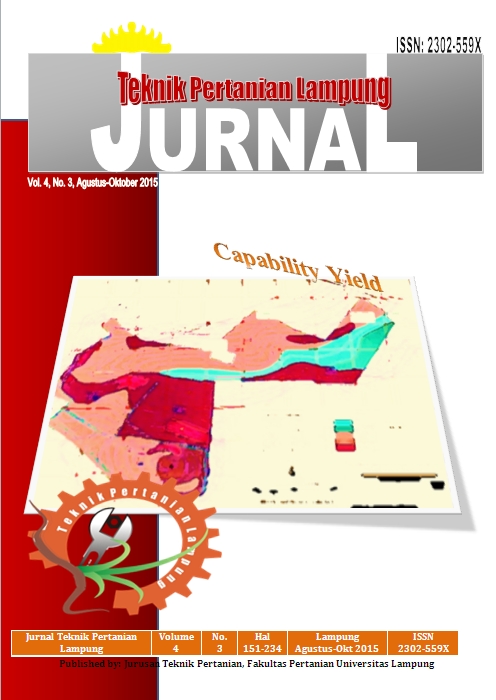THE EFFECT OF LAMP TYPES ON THE GROWTH AND PRODUCTION OF LETTUCE GROWN IN AN INDOOR HYDROPHONIC SYSTEM
Abstract
The objective of this research was to evaluate responses of grand rapid lettuce (Lactuca sativa L.) grown in anindoor hydrophonic system(awick system) under the treatments of some different types of lighting. The research
was conducted in April to June 2015. The treatment in this reearch consisted of a single factor (types of lighting)
with five levels: Sun lighting (N0), 2 tubes of 18Watt fluorescent lamp (N1), 2 sets of 36Watt LED + 1 tube of 150
Watt halogenlamp (N2), 2 setsof 36Watt LED+ 2 tubes of18Watt fluorescent lamp (N3), and 150Wattbulb (N4).
Each treatment consisted of four plantswhichwere grown in a 60 cmx 60 cmx 120 cmgrowth chambermade of
plywood, except for sun light treated plantswhich were placed inamini greenhouse. Results showed that among
the plants in the growth chambers, the best vegetative growthwas shown by the lettuce in the treatment of 2 sets
of 36Watt LED + 2 tubes of 18Watt fluorescent lamp (N3), However; compared to those plants grown under the
sun light, the lettuce inN3 still looked etiolation because light intensitywas not optimal yet.
Keywords: Lamp types, lettuce plants, wick systemhydroponic
Downloads
Published
2015-10-30
Issue
Section
Articles
License
- Authors who publish with this journal agree to the following terms:
- Authors retain copyright and grant the journal right of first publication with the work simultaneously licensed under a Creative Commons Attribution-ShareAlike 4.0 International Lice that allows others to share the work with an acknowledgement of the work's authorship and initial publication in this journal.
- Authors are able to enter into separate, additional contractual arrangements for the non-exclusive distribution of the journal's published version of the work (e.g., post it to an institutional repository or publish it in a book), with an acknowledgement of its initial publication in this journal.
- Authors are permitted and encouraged to post their work online (e.g., in institutional repositories or on their website) prior to and during the submission process, as it can lead to productive exchanges, as well as earlier and greater citation of published work (See The Effect of Open Access).
Jurnal Teknik Pertanian Lampung

JTEPL is licensed under a Creative Commons Attribution-ShareAlike 4.0 International License.

